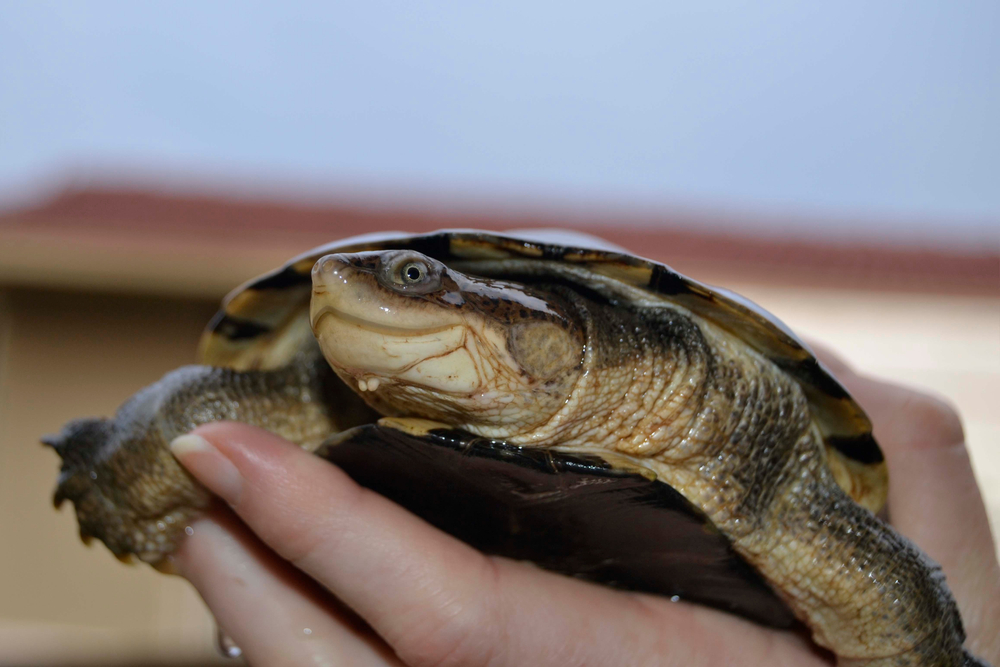Mastering Care for African Sideneck Turtles: Habitat Insights and Tips

African Sideneck Turtles, also known as Pelusios castaneus, are fascinating and unique reptiles that can make delightful pets. Native to various parts of Africa, these turtles are known for their distinctive sideway retracting necks, which set them apart from other turtle species. To ensure your African Sideneck Turtle thrives, it’s essential to understand their habitat needs and proper care practices. This guide provides valuable insights and tips to help you master the care of these intriguing creatures.
When considering adopting an African Sideneck Turtle, it’s important to learn about their specific requirements. For a more detailed understanding, check out this comprehensive guide to caring for African Sideneck Turtles to ensure you provide the best environment for your pet.
Natural Habitat and Enclosure Setup
Creating a suitable habitat that mimics the natural environment of African Sideneck Turtles is crucial for their well-being. These turtles are semi-aquatic, spending time both in water and on land. Here are key considerations for setting up their enclosure:
- Tank Size and Water Features: A spacious tank is essential. For a single adult turtle, a 75-gallon tank is recommended. Ensure the tank has both aquatic and terrestrial areas. Use a powerful filtration system to keep the water clean and maintain a water depth of at least 10 inches.
- Basking Area: Provide a basking platform where your turtle can dry off and absorb UVB light. This platform should be easily accessible and positioned under a UVB light source to aid in the synthesis of vitamin D3, which is vital for their shell and bone health.
- Temperature and Lighting: Maintain a water temperature of 75-82°F (24-28°C) using an aquarium heater. The basking area should have a temperature of 90-95°F (32-35°C). Use a combination of UVB and heat lamps to create the appropriate lighting conditions.
- Substrate and Decorations: Use a sandy or gravel substrate at the bottom of the tank to create a natural feel. Add aquatic plants, rocks, and driftwood to provide hiding spots and enrichment for your turtle.
Diet and Nutrition
African Sideneck Turtles are omnivores, requiring a balanced diet to stay healthy. Their diet should include a mix of animal protein, vegetables, and commercial turtle pellets. Here are some dietary guidelines:
- Animal Protein: Provide protein sources such as feeder fish, insects (crickets, mealworms), and cooked chicken or turkey. Offer protein-rich foods two to three times a week.
- Vegetables: Include leafy greens like kale, collard greens, and dandelion greens in their diet. Vegetables like squash, carrots, and bell peppers are also beneficial.
- Commercial Pellets: High-quality commercial turtle pellets can be a staple part of their diet. These pellets are formulated to provide essential nutrients and should be offered daily.
- Calcium Supplementation: Dust their food with a calcium supplement a few times a week to ensure proper shell and bone development. Additionally, provide a cuttlebone in the tank for them to nibble on.
Hydration and Health Care
Proper hydration and regular health care are essential for the well-being of African Sideneck Turtles. Here are some tips to keep them healthy:
- Clean Water: Ensure the water in the tank is clean and well-filtered. Perform regular water changes to maintain water quality and prevent bacterial growth.
- Hydration: These turtles get most of their hydration from the water in their tank. Make sure they have constant access to clean, fresh water.
- Health Monitoring: Regularly check your turtle for signs of illness, such as changes in appetite, lethargy, or shell abnormalities. If you notice any concerning symptoms, consult a reptile veterinarian promptly.
- Preventive Care: Schedule annual check-ups with a reptile-savvy veterinarian to monitor your turtle’s health and address any potential issues early on.
Enrichment and Socialization
Enrichment and socialization play a significant role in the overall well-being of African Sideneck Turtles. Providing mental and physical stimulation helps prevent boredom and stress. Here are some ideas:
- Environmental Enrichment: Include various hiding spots, tunnels, and climbing areas in the enclosure to encourage natural behaviors. Rotate decorations periodically to keep the environment interesting.
- Interactive Time: Spend time interacting with your turtle through gentle handling and supervised exploration outside the tank. This helps them become accustomed to human presence and provides mental stimulation.
- Feeding Enrichment: Offer food in different ways, such as placing it in floating objects or using feeding tongs. This encourages natural hunting and foraging behaviors.
Conclusion: Ensuring a Happy and Healthy Life for Your African Sideneck Turtle
In conclusion, mastering the care of African Sideneck Turtles involves providing a well-maintained habitat, a balanced diet, regular health check-ups, and enrichment activities. By understanding their specific needs and mimicking their natural environment, you can ensure your turtle leads a healthy and fulfilling life. Remember, each turtle is unique, and attentive care will help your pet thrive.




